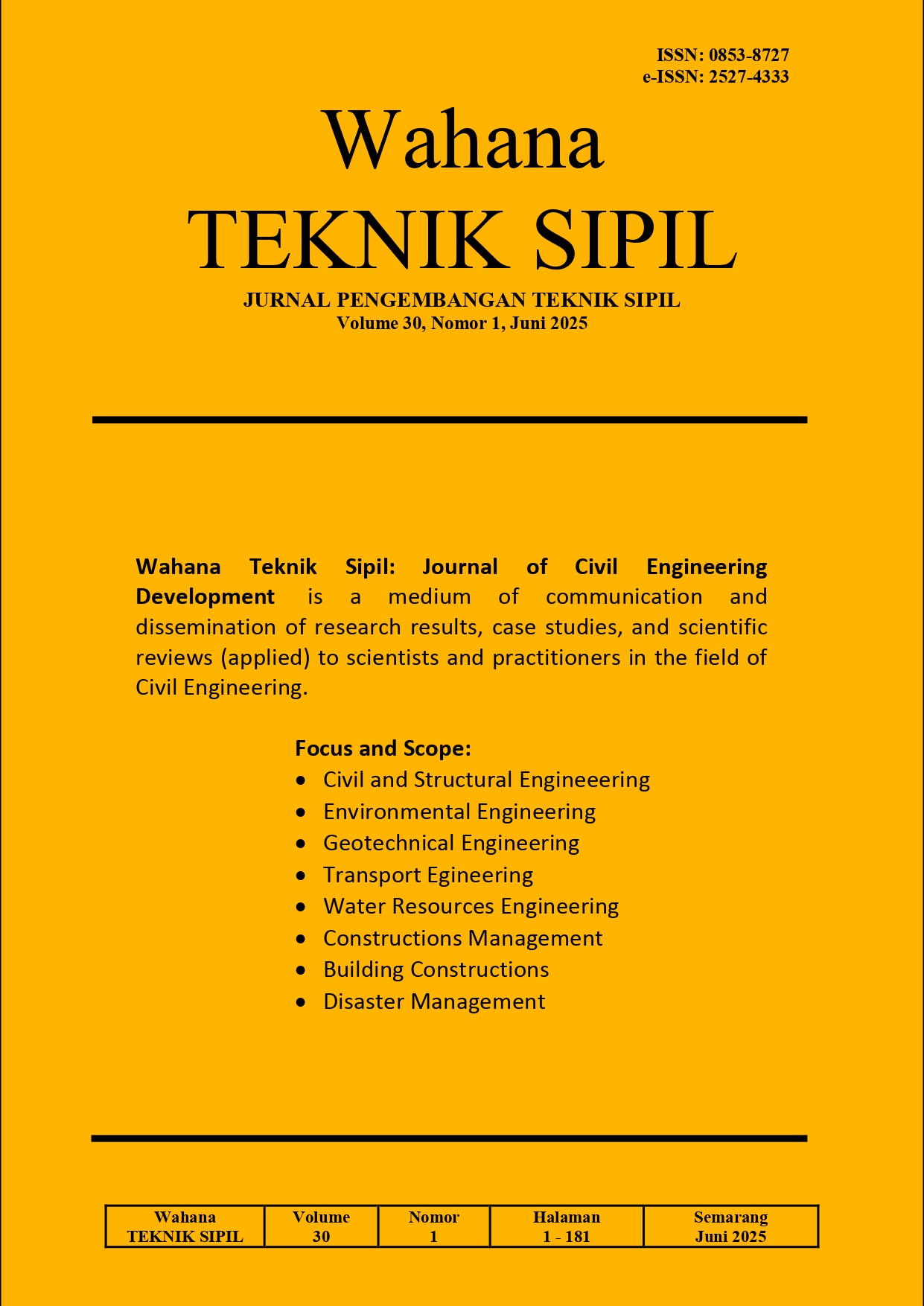PENGEMBANGAN PROTOTIPE ALAT UJI PERMEABILITAS BETON BERPORI UNTUK MENENTUKAN KOEFISIEN PERMEABILITAS
DOI:
https://doi.org/10.32497/wahanats.v30i1.6481Abstract
The increasing growth of infrastructure and building development has led to a reduction in land surface cover. The lack of surface cover significantly impacts the environment, such as causing severe flooding. To address water-related issues, one approach is to manage runoff at its source through Low Impact Development (LID) strategies, such as permeable pavements. One method used to infiltrate water is porous concrete. Key parameters of porous concrete include strength, water-cement ratio, porosity, and permeability coefficient. The permeability coefficient of porous concrete is obtained through permeability testing. Laboratory permeability tests are more commonly used than field-testing. Therefore, it is important to have a dedicated tool for testing the permeability of porous concrete.
The first stage involves the development and testing of a prototype, which includes prototype design, material survey, material procurement, equipment preparation, prototype construction, and testing. The prototype development refers to the ACI 522R-10 standard. The results of the prototype testing are analyzed using Darcy’s law to determine the permeability coefficient and analyze the flow characteristics.
Based on the research findings, the permeability test prototype for porous concrete can be used as a testing tool for porous concrete permeability both in laboratory and field settings. The prototype exhibits laminar flow, thus allowing Darcy’s law to be applied for evaluating hydraulic conductivity.
Downloads
Published
Issue
Section
License
Copyright (c) 2025 Aiun Hayatu Rabinah

This work is licensed under a Creative Commons Attribution 4.0 International License.
Authors who publish with this journal agree to the following terms:Authors retain copyright and grant the journal right of first publication with the work simultaneously licensed under a Creative Commons Attribution License that allows others to share the work with an acknowledgement of the work's authorship and initial publication in this journal.
Authors are able to enter into separate, additional contractual arrangements for the non-exclusive distribution of the journal's published version of the work (e.g., post it to an institutional repository or publish it in a book), with an acknowledgement of its initial publication in this journal.
Authors are permitted and encouraged to post their work online (e.g., in institutional repositories or on their website) prior to and during the submission process, as it can lead to productive exchanges, as well as earlier and greater citation of published work (See The Effect of Open Access).






